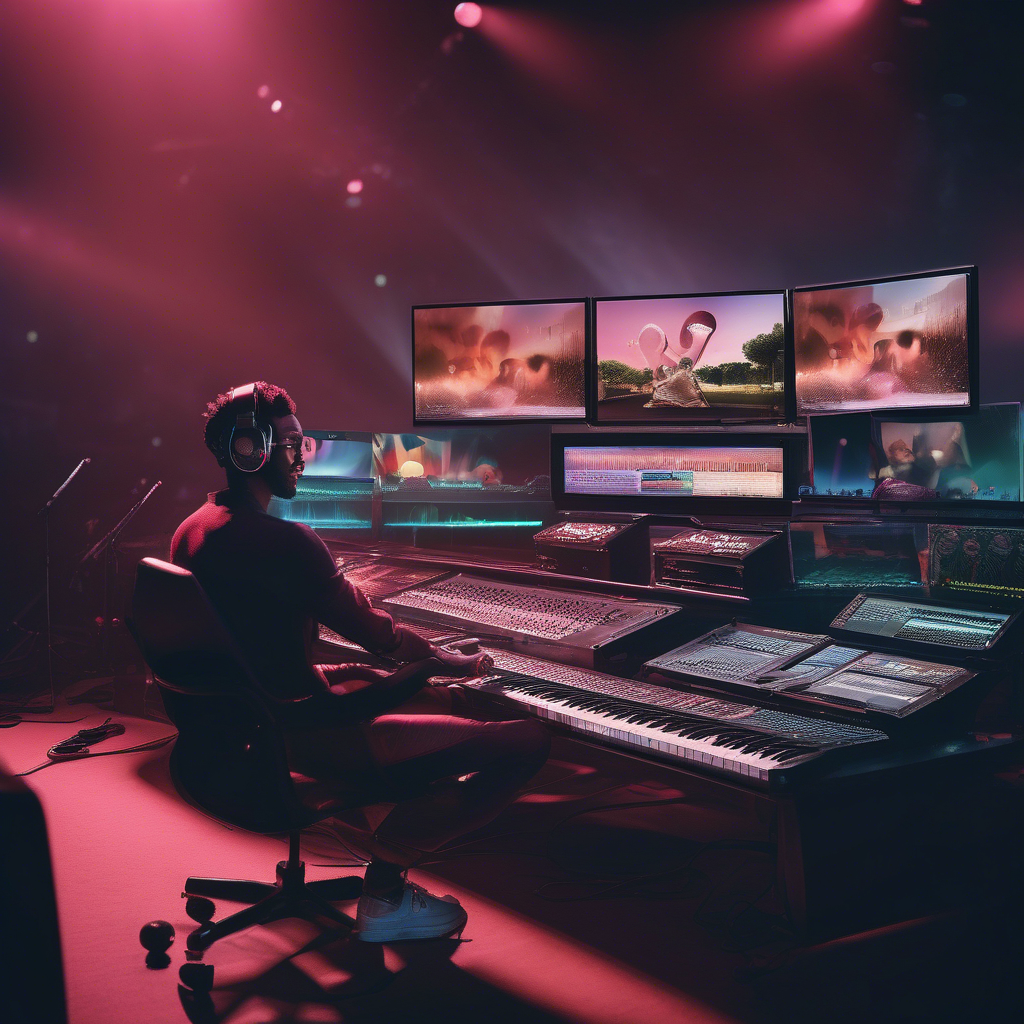Music Industry Trends: Navigating Streaming, NFTs, and Digital Royalties

The music industry is undergoing a seismic shift, driven by the integration of technology and digital mediums. As streaming services, NFTs, and digital royalties redefine the landscape, artists and industry professionals must adapt to remain relevant. Understanding these changes is crucial for those aiming to thrive in this dynamic environment.
In today’s fast-paced world, the impact of technology on narrative structure in music is more significant than ever. Streaming music impact, NFTs in music, and digital royalties are not just buzzwords—they are shaping the future of the industry. This article will explore these trends, offering insights and actionable strategies for navigating this new terrain.
Through this comprehensive guide, you will learn about the evolving role of streaming services, the burgeoning market for music NFTs, and the complexities of digital royalties. By the end, you’ll have a clear understanding of current music industry trends and how they can be leveraged for success.
The Rise of Streaming Services
The advent of music streaming services like Spotify, Apple Music, and Amazon Music has revolutionized how people consume music. In 2022 alone, streaming accounted for 83% of the music industry’s revenue, highlighting its dominant role. For artists, this shift means increased accessibility to global audiences but also challenges in monetization.
Streaming music impact is profound, as it has democratized music discovery. An independent artist can now reach listeners worldwide without a major label’s backing. For example, artists like Billie Eilish and Chance the Rapper gained massive followings through platforms like SoundCloud before transitioning to mainstream success.
However, the economics of streaming present challenges. Artists often receive fractions of a cent per stream, leading to debates about fair compensation. To adapt, many artists are focusing on building loyal fanbases and leveraging other revenue streams, such as merchandise and live performances. Understanding these dynamics is essential for anyone involved in the music industry.
Exploring NFTs in Music
NFTs (Non-Fungible Tokens) have emerged as a revolutionary force in the music industry, providing artists with new revenue opportunities. Unlike traditional sales, NFTs allow artists to sell unique digital assets, such as exclusive album releases or concert experiences. This trend is reshaping the economics of music ownership and distribution.
Artists like Grimes and Kings of Leon have successfully used NFTs to monetize their work directly, bypassing traditional intermediaries. In March 2021, Grimes sold $6 million worth of digital art and music as NFTs, showcasing the potential of this technology. This approach offers artists greater creative control and a larger share of the profits.
However, NFTs in music come with challenges, including environmental concerns and market volatility. As artists explore this space, they must weigh these factors and consider sustainable practices. The future of music industry trends will likely see NFTs becoming an integral part of the business model, offering both opportunities and challenges.
Understanding Digital Royalties in Music
Digital royalties in music are a critical component of an artist’s income, especially in the streaming era. These royalties are payments made to rights holders whenever their music is played on digital platforms. However, the landscape of digital royalties is complex, with various types including performance, mechanical, and synchronization royalties.
One significant challenge is the opaque nature of royalty distribution. Artists often struggle to track their earnings across multiple platforms. Initiatives like blockchain technology are being explored to provide transparency and ensure fair compensation. Companies like Audiam and Songtrust are already leveraging technology to simplify royalty management for artists.
To navigate this complexity, artists and industry professionals need to stay informed about the latest developments and technologies. Understanding the intricacies of digital royalties music is essential for ensuring that artists receive their fair share, impacting the overall sustainability of their careers.
For a visual exploration of these emerging trends, check out this complementary video content. It delves deeper into how artists are leveraging technology to innovate and thrive in the digital age. Whether you’re an artist or an industry professional, this video offers valuable insights into the evolving music landscape.

Frequently Asked Questions
How have streaming services changed the music industry?
Streaming services have transformed the music industry by making music more accessible and introducing a subscription model. This shift has increased revenue from digital channels but has also raised concerns over artist compensation. For example, services like Spotify offer exposure to a global audience, but artists earn only a small amount per stream.
What are the benefits of NFTs for musicians?
NFTs give musicians the ability to sell unique digital assets directly to fans, providing new revenue streams and greater creative control. For instance, artists can sell exclusive concert experiences or digital art. This allows for a deeper connection with fans and potentially higher profits compared to traditional sales models.
Why are digital royalties important in the music industry?
Digital royalties are crucial for artists’ financial sustainability, especially as streaming becomes the dominant mode of music consumption. These royalties ensure that artists are compensated for the use of their music across digital platforms. Proper royalty management can significantly impact an artist’s income and career longevity.
What challenges do artists face with digital royalties?
Artists often encounter challenges such as the lack of transparency in royalty distribution and the complexity of managing multiple revenue streams. Tools like blockchain are being explored to address these issues, offering potential solutions for fair and transparent royalty payments.
How can artists leverage technology to succeed in the music industry?
Artists can leverage technology by embracing streaming platforms for exposure, using NFTs for direct sales, and employing digital tools for efficient royalty management. By staying informed about technological advancements, artists can make strategic decisions that enhance their reach and revenue potential.
Conclusion
As we’ve explored, the music industry is rapidly evolving with trends like streaming services, NFTs, and digital royalties fundamentally reshaping how music is consumed and monetized. These changes present both opportunities and challenges for artists and industry professionals alike.
To thrive in this environment, it’s essential to understand these trends and adapt accordingly. Artists should focus on building direct relationships with fans, diversifying revenue streams, and utilizing technology for efficient rights management. By doing so, they can navigate this complex landscape and secure sustainable careers.
For further exploration, consider these complementary topics: “The Role of Social Media in Music Promotion,” “Blockchain’s Impact on the Music Industry,” and “The Future of Live Music in a Digital World.” Engaging with these subjects will provide a more comprehensive understanding of the ongoing transformations in the music industry.




